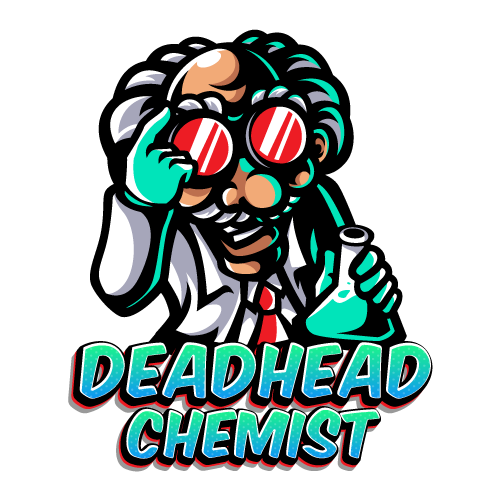DMT: A Deep Dive into “The Spirit Molecule”
Often whispered about in psychedelic circles and famously dubbed “The Spirit Molecule” by Dr. Rick Strassman, DMT stands as one of the most potent and enigmatic psychoactive substances known to humanity. Its ability to induce brief yet overwhelmingly intense visionary states has captivated everyone from ancient Amazonian shamans to modern neuroscientists. N,N-Dimethyltryptamine, or DMT, is a powerful psychedelic compound belonging to the tryptamine family. Tryptamines are naturally occurring compounds found throughout the plant and animal kingdoms. Remarkably, DMT is even produced in trace amounts within the human body, though its precise function remains a subject of scientific debate.
DMT can be found in two primary contexts:
* As a Synthetic Crystalline Powder: In its isolated form, DMT is a white or yellowish crystalline solid. This form is typically vaporized or smoked, leading to a very rapid, intense, and short-lived experience.
* As a Key Ingredient in Ayahuasca: DMT is the primary psychoactive component in the traditional Amazonian ceremonial brew known as ayahuasca. In this preparation, DMT-containing plants (like Psychotria viridis) are brewed with plants containing a Monoamine Oxidase Inhibitor or MAOI (like Banisteriopsis caapi). The MAOI prevents the stomach from breaking down the DMT, allowing it to be absorbed into the bloodstream and produce a much longer-lasting experience, typically lasting four to six hours.
The DMT Experience: Effects and “The Breakthrough”
The effects of vaporized DMT are famously rapid, with users often reporting leaving their body and entering a completely different reality within seconds of inhalation. The peak experience is short, generally lasting only 5 to 15 minutes, with lingering effects fading over the next 30 to 60 minutes.
The experience itself is often described as ineffable, but common themes include:
* Intense Visual and Auditory Hallucinations: Users report seeing complex, rapidly shifting geometric patterns, vivid colors, and intricate fractal landscapes.
* Altered Perception of Time and Space: A few minutes in clock time can feel like an eternity. The sense of physical space and one’s own body can completely dissolve.
* Ego Dissolution: A complete loss of subjective self-identity. The user may feel a sense of merging with the universe or a higher consciousness.
* The “Breakthrough”: This term describes a common experience where users feel they have broken through a veil into an alternate dimension.
* Encountering “Entities”: Many users report meeting what they perceive as intelligent, non-human beings or entities, often described as elves, spirits, or aliens. These interactions can range from benevolent and insightful to confusing or frightening.
How Does DMT Work in the Brain?
Like other classic psychedelics such as psilocybin (from magic mushrooms) and LSD, DMT primarily exerts its effects by binding to serotonin receptors in the brain. Its strongest affinity is for the serotonin 2A (5-HT_{2A}) receptor.
Activating this receptor site, particularly in high-level cognitive regions like the prefrontal cortex, is thought to disrupt normal brain network patterns. This leads to a state of heightened brain connectivity, allowing regions that don’t normally communicate to interact. Scientists believe this neurological “shaking of the snow globe” is what underlies the profound shifts in perception, thought, and consciousness that characterize the DMT experience.
Potential Risks and Safety Considerations
While DMT is not considered to be physically addictive, its use is not without significant risks.
* Psychological Risks: The sheer intensity of the experience can be psychologically overwhelming, leading to severe anxiety, paranoia, and confusion. For individuals with a personal or family history of psychosis (like schizophrenia), it could potentially trigger a lasting psychotic episode.
* Physical Risks: DMT causes a rapid increase in heart rate and blood pressure, which could be dangerous for individuals with pre-existing cardiovascular conditions.
* Dangerous Drug Interactions: When consumed as ayahuasca, the MAOI component can have fatal interactions with certain antidepressants (especially SSRIs) and even some common foods.
* The Importance of “Set and Setting”: As with all psychedelics, the user’s mindset (“set”) and physical environment (“setting”) are critical. A negative mindset or an unsafe environment can dramatically increase the likelihood of a terrifying and traumatic experience.
Legal Status and The Future of Research
In most countries, including the United States, DMT is classified as a Schedule I controlled substance. This means it is deemed to have a high potential for abuse and no currently accepted medical use. Manufacturing, possessing, or distributing it is illegal and carries severe penalties.
Despite its legal status, scientific interest in DMT is growing rapidly. Prestigious institutions like Imperial College London and Johns Hopkins University are conducting groundbreaking research into its potential therapeutic applications. Early studies suggest that, in a controlled clinical setting, DMT could be a powerful tool for treating mental health conditions such as:
* Major Depressive Disorder (MDD)
* Treatment-Resistant Depression
* Anxiety related to terminal illness
* Addiction
The goal of this research is not for patients to use DMT recreationally, but to use it as a catalyst in a structured therapeutic process to facilitate deep psychological breakthroughs.
Conclusion
DMT is undeniably one of the most powerful psychedelic substances on the planet. For millennia, it has been used in sacred rituals to explore the nature of consciousness and reality. Today, modern science is just beginning to unlock its secrets, revealing a complex compound that profoundly alters brain function and holds intriguing potential as a future therapeutic tool.
However, its profound effects are matched by significant risks. Its legal status and potential for overwhelming psychological experiences mean it should be approached with the utmost caution and respect.
Disclaimer: This article is for informational and educational purposes only. It does not constitute medical advice, nor does it endorse the use of illegal substances. The use of DMT can have serious legal and health consequences. Always consult with a qualified medical professional for any health concerns.
